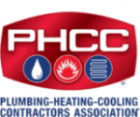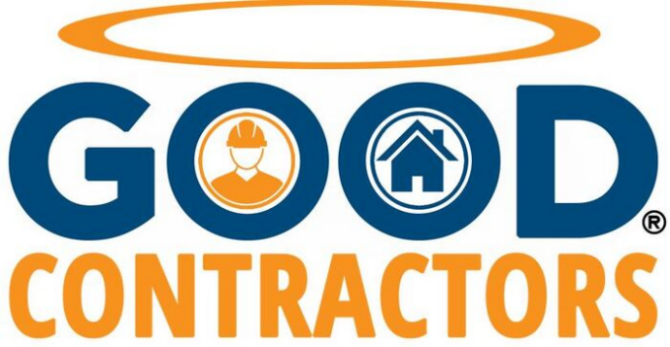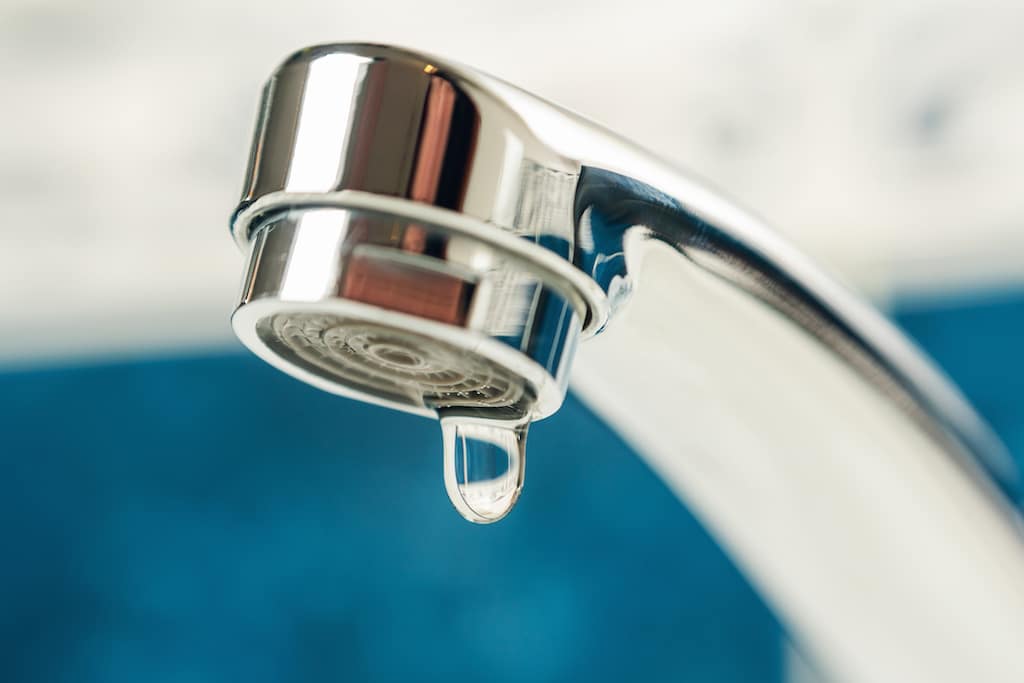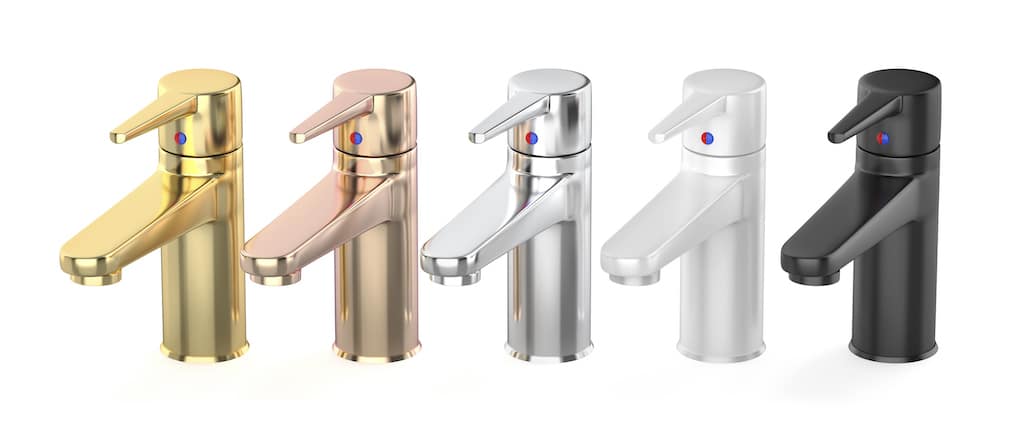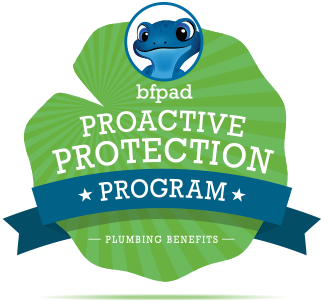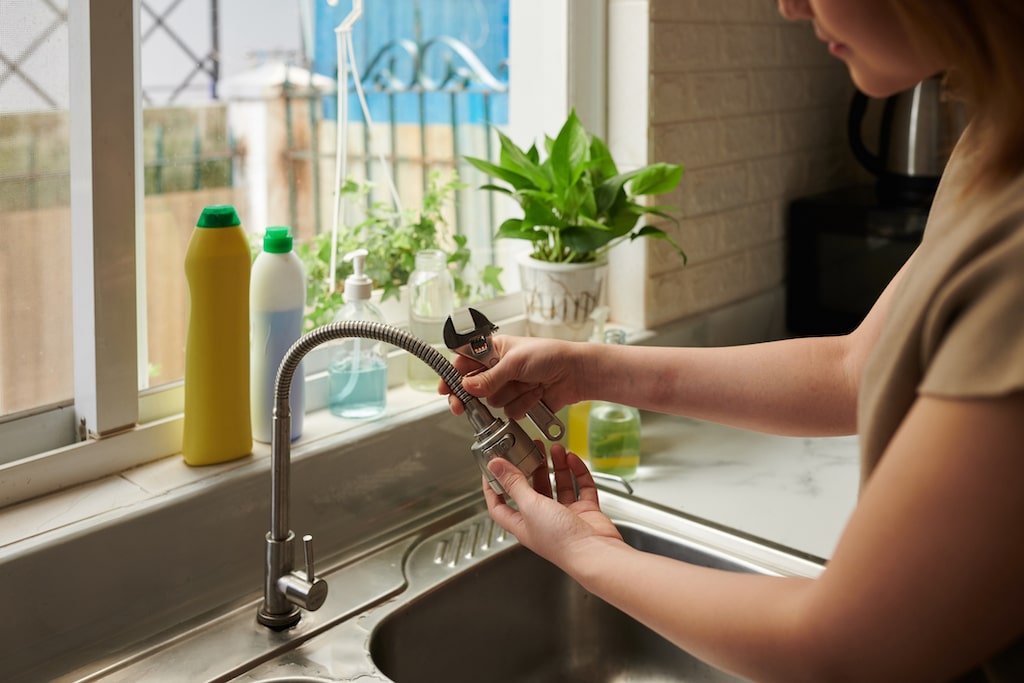
Unleashing the Power of Water Faucet: Comprehensive Guide
Have you ever considered the critical role your water faucet plays in your daily life?
From the moment you wake up to the time you go to bed, it’s an integral part of your home’s functionality. Whether you’re a homeowner in a bustling city or a serene suburb, understanding your water faucet can significantly enhance your living experience.
In this article, we delve deep into the world of water faucets. You’ll gain insights into their types, maintenance, and troubleshooting tips.
We’ll also explore innovative water faucet technologies and how they can transform your home. Whether you’re dealing with a leaky tap or planning to upgrade your kitchen or bathroom, this guide has got you covered.
Photo By Andrei310 at iStock
A Detailed Explanation of Water Faucets
Water faucets are more than just a water source; they are a blend of functionality and aesthetics in your home. They come in various styles and functionalities, catering to different needs and preferences.
Whether it’s a kitchen sink tap, a bathroom faucet, or an outdoor spigot, each type serves a unique purpose.
What is a Water Faucet?
A water faucet, also known as a water tap, is a crucial fixture in both residential and commercial settings, controlling the release and flow of water from a plumbing system. This indispensable device is central to daily activities, ranging from cooking and cleaning to personal hygiene and gardening.
Water faucets come in an array of styles and functionalities to suit different needs and preferences.
For instance, kitchen sink taps are designed to accommodate the filling of pots and easy cleaning, while bathroom faucets often focus on conserving water and enhancing the room’s aesthetics. Outdoor spigots are built to withstand the elements, providing a durable solution for gardening and exterior maintenance tasks.
Innovations in faucet technology have led to the development of advanced features aimed at increasing convenience and efficiency.
Touchless water faucets, for example, use sensors to start and stop the flow of water, reducing water wastage and preventing the spread of germs. Faucet aerators, a common feature in modern faucets, mix air with water to reduce usage without compromising water pressure.
For those concerned with water quality, faucet water filters offer an easy and effective way to access clean, filtered water directly from the tap. These filters can remove a variety of contaminants, improving the taste and safety of drinking water.
Installation and maintenance are key aspects of faucet longevity. While some homeowners opt for DIY water tap installation, professional assistance ensures optimal performance and can prevent future issues.
Regular maintenance, such as cleaning and checking for leaks, extends the life of the faucet and helps maintain water efficiency.
Whether you’re choosing a high-efficiency faucet for your kitchen, a stylish bathroom faucet, or a durable outdoor spigot, understanding the different types and features of water faucets can help you make informed decisions, ensuring that your water fixtures meet your needs and complement your home’s design.
Understanding the Basics of Faucets
The Fundamental Role of Water Faucets
At its core, a water faucet is an essential device that controls the flow of water from your plumbing system, serving as a critical component in various daily tasks.
Whether it’s washing dishes, taking a shower, or watering the garden, the water faucet stands as a pivotal point in the efficient management of water in your home.
Faucets Efficiency and Conservation
Modern water faucets are designed with more than just functionality in mind; they are also about promoting water efficiency and conservation.
Innovations like faucet aerators and high-efficiency faucets are at the forefront of this movement. Faucet aerators, for instance, mix air with the water stream, significantly reducing water usage without compromising on pressure. This not only conserves water but also contributes to lower utility bills.
Advanced Features and Technologies of Modern Faucets
Touchless Water Faucets
One of the most notable advancements in faucet technology is the development of touchless water faucets. These faucets use motion sensors to control water flow, offering a hands-free experience that enhances hygiene and conserves water.
Touchless faucets are particularly beneficial in preventing the spread of germs, making them a popular choice in both residential and commercial settings.
Water Tap Installation and Maintenance
Proper installation and maintenance are crucial for the longevity and efficiency of your water faucet.
While some homeowners are comfortable with DIY installation, professional installation ensures that your faucet is set up correctly, potentially saving you from costly repairs down the line. Regular maintenance, such as cleaning the faucet aerator and checking for leaks, is essential to keep your faucet in optimal working condition.
Faucet Water Filters
For those concerned about water quality, integrating a faucet water filter can be a game-changer. These filters attach directly to your faucet, providing immediate access to purified water.
They are effective in removing contaminants and improving the taste, making your tap water safer and more pleasant to drink.
Choosing the Right Faucet
When selecting a water faucet, consider the specific needs of your space. Kitchen sink taps, for instance, might require different features compared to bathroom faucets or outdoor spigots.
Factors like faucet water filters, touchless operation, and the type of faucet aerator can all influence your decision, ensuring that your faucet not only meets your daily needs but also aligns with your water conservation goals.
Photo By MileA at iStock
Types of Faucets
Understanding the different types of faucets available can help you make an informed decision that suits your specific needs and enhances the functionality and style of your space.
Kitchen Sink Taps
Kitchen sink taps are designed to handle a variety of tasks, making them one of the most used fixtures in the home.
Features like pull-out spray faucets or pull-down models offer added convenience, allowing for greater flexibility and reach when washing dishes or filling pots. Sink mixer taps combine hot and cold water streams, allowing for precise temperature control, while touchless water faucets can provide a hygienic and modern touch to any kitchen.
Bathroom Faucets
Bathroom faucets often prioritize aesthetics as much as functionality, with designs that complement the overall decor of the room.
From sleek, modern designs to more traditional styles, there’s a bathroom faucet to match any interior design theme. Options like wall-mounted faucets can save counter space and add a unique touch, while faucet aerators and low-flow models help conserve water without sacrificing performance.
Outdoor Spigots
Outdoor spigots are built to endure the elements, providing a reliable water source for gardening, cleaning, and other outdoor activities. Durability is key, with materials and designs that resist corrosion and wear.
Features like an adjustable flow faucet can offer versatility, allowing you to control the water pressure based on the task at hand, whether it’s filling a bucket or gently watering plants.
Specialized Faucets
Beyond the standard kitchen, bathroom, and outdoor faucets, there are specialized types designed for specific purposes.
For instance, a pot filler faucet installed near the stove can save time and effort in the kitchen, while a bar sink faucet might be a smaller, more streamlined version designed for wet bar or entertainment areas.
Faucet water filters and hot water dispensers are additional enhancements that can add functionality and convenience to your water faucet setup.
Choosing the Right Faucet
When selecting a faucet, consider the specific requirements of the area where it will be installed. Think about the tasks you’ll be performing and the level of durability and water efficiency you need.
Whether it’s the convenience of a kitchen sink tap with a pull-out spray, the elegance of a stylish bathroom faucet, or the ruggedness of an outdoor spigot, the right faucet can significantly enhance your water usage experience while complementing the style of your home or garden.
Installation and Maintenance of Faucets
Proper installation and regular maintenance are key to ensuring that your water faucet functions efficiently and lasts for years.
Understanding the nuances of installation and the importance of routine upkeep can save you from future headaches and unexpected expenses.
Installation Essentials
Installing a new water faucet or replacing an existing one can significantly enhance the functionality and aesthetics of your space. The installation process varies based on the type of faucet and the specifics of your plumbing system.
For instance, installing a simple kitchen sink tap might be straightforward, but setting up a complex system like a touchless water faucet or a shower unit with multiple heads could require professional expertise.
Preparation:
Before beginning the installation, it’s crucial to gather all necessary tools and materials. This might include wrenches, Teflon tape, and the faucet assembly itself.
Shut Off the Water
Always start by turning off the water supply to prevent any accidental spills or leaks during the installation process.
Remove the Old Faucet
If you’re replacing a faucet, carefully disconnect and remove the old unit, ensuring not to damage the sink or countertop.
Install the New Faucet
Follow the manufacturer’s instructions closely when installing the new faucet. This typically involves securing the faucet in place, connecting the water supply lines, and ensuring all connections are tight and leak-free.
Test the Faucet
Once installed, slowly turn the water back on and check for any leaks or issues with the faucet’s operation.
Routine Maintenance
Regular maintenance is crucial to extend the lifespan of your faucet and ensure it continues to operate efficiently. Here are some key maintenance tasks:
Faucet Cartridge Replacement:
Over time, faucet cartridges can wear out, leading to leaks or difficulty in controlling the water flow. Replacing the cartridge is a common maintenance task that can restore your faucet’s functionality.
Leak Fixes:
Addressing leaks promptly can prevent water waste and potential damage to your home. Common leak fixes might involve tightening connections or replacing worn-out washers or gaskets.
Cleaning and Descaling:
Regular cleaning helps prevent the buildup of mineral deposits and grime, which can affect your faucet’s performance and appearance. Using a mild cleaner and a soft cloth can keep your faucet looking and working its best.
Aerator Maintenance:
The faucet aerator should be cleaned periodically to remove debris and ensure a consistent water flow. This simple task can improve water efficiency and prevent splashing.
By understanding the installation process and committing to regular maintenance, you can ensure that your water faucet remains a reliable and efficient fixture in your home, contributing to a seamless daily routine and the overall well-being of your household.
Benefits of Choosing the Right Faucet
Selecting the right water faucet is a decision that impacts not only the aesthetics of your space but also its functionality and environmental footprint.
Understanding the benefits of choosing the appropriate faucet can guide you in making an informed decision that aligns with your lifestyle, design preferences, and conservation goals.
Enhanced Water Efficiency
One of the primary benefits of selecting the right faucet is improved water efficiency. Faucets equipped with features like faucet aerators and adjustable flow controls can significantly reduce water consumption without compromising performance.
For example, a high-efficiency faucet can conserve water by delivering a lower flow rate while still providing adequate water pressure for daily tasks. This not only helps in conserving a precious resource but also translates into lower water bills.
Cost-Effectiveness
Investing in a water-efficient faucet can be cost-effective in the long run. By reducing water usage, these faucets can lower your monthly water bills.
Additionally, features like durable faucet cartridges and robust construction materials can extend the lifespan of the faucet, minimizing the need for frequent replacements or repairs.
Over time, the savings from reduced water consumption and lower maintenance costs can add up, making the initial investment in a high-quality faucet financially beneficial.
Aesthetic Appeal and Functionality
The right faucet can also enhance the aesthetic appeal of your space.
Whether you’re looking for a sleek, modern design for your kitchen or a classic, elegant style for your bathroom, there’s a faucet to match every interior design theme.
Moreover, faucets with features like pull-out spray heads, touchless operation, or LED temperature indicators combine functionality with style, offering convenience while adding a touch of sophistication to your space.
Eco-Friendliness
Choosing a water-saving faucet is a step toward eco-friendly living. By reducing water wastage, you’re contributing to the conservation of this vital resource, which is crucial for the environment.
Features like faucet aerators, which introduce air into the water stream to maintain pressure while using less water, exemplify how modern faucets can align with sustainable living practices.
Customization and Convenience
Modern faucets offer a range of customization options to suit your specific needs.
From adjustable flow rates and temperature controls to easy-to-install faucet water filters for cleaner drinking water, the right faucet can provide a tailored experience that enhances convenience and comfort in your daily routines.
Choosing the right faucet is a decision that offers multiple benefits, from enhancing water efficiency and reducing bills to adding elegance and functionality to your space.
By considering factors like efficiency, aesthetics, and eco-friendliness, you can select a faucet that not only meets your practical needs but also reflects your values and style preferences.
Proactive Issue Detection and Professional Consultation
Maintaining the optimal functionality of your water faucet requires a proactive approach to issue detection and a willingness to seek professional advice when necessary.
Understanding the signs of potential faucet problems and knowing when to consult a professional can save you time and money, ensuring your faucet remains in top condition.
Recognizing Early Signs of Faucet Issues
Unusual Noises:
Pay attention to any odd sounds coming from your faucet, such as screeching, banging, or whistling. These noises can indicate various issues, from mineral buildup in the faucet aerator to pressure changes in the plumbing system.
Inconsistent Water Flow:
Changes in water pressure or flow can signal problems. A sudden drop in pressure might indicate a blockage or leak in your plumbing, while inconsistent flow could point to a malfunctioning faucet cartridge or clogged aerator.
Visible Wear and Tear:
Regularly inspect your faucet for signs of corrosion, rust, or other wear and tear. Physical deterioration can affect both the appearance and functionality of your faucet, potentially leading to leaks or operational issues.
Leaks and Drips:
A dripping faucet or visible leaks around the base or handle are clear indicators that something is amiss. Addressing these issues promptly can prevent water wastage and potential damage to surrounding areas.
Consulting with Professional Plumbers
Complex Installations:
When installing advanced faucet systems or integrating smart technology, professional expertise ensures that the installation is done correctly, aligning with industry standards and manufacturer guidelines.
Diagnosing Difficult Issues:
Some faucet problems can be complex, requiring a thorough understanding of plumbing systems. Professional plumbers have the tools and knowledge to diagnose and resolve issues efficiently, preventing further damage.
Regular Maintenance Checks:
Scheduling regular maintenance with a professional can help identify and address potential issues before they escalate. Plumbers can provide comprehensive checks, including inspecting for leaks, testing water pressure, and assessing the condition of internal components.
Emergency Situations:
In the event of a plumbing emergency related to your faucet, such as a significant leak or burst pipe, immediate professional intervention is crucial to mitigate damage and restore functionality.
By staying vigilant and proactive in detecting issues with your water faucet, and by not hesitating to engage professional plumbers when necessary, you can ensure the longevity and reliability of your faucet.
This approach not only maintains the faucet’s performance but also contributes to the overall efficiency and safety of your home’s plumbing system.
Advanced Features and Smart Technology
Incorporating advanced features and smart technology into your water faucet can transform a mundane fixture into a central, interactive component of your home. These innovations not only offer convenience but also promote water conservation and hygiene.
Touchless Operation
Touchless water faucets are a leap forward in faucet technology, utilizing sensors to control water flow. This feature allows you to activate the faucet without physical contact, reducing the spread of germs and bacteria—a particularly valuable feature in kitchens and bathrooms.
Moreover, touchless faucets can significantly cut down on water usage, as they ensure the water runs only when needed, eliminating unnecessary wastage.
Temperature Indicators and Control
Modern faucets may come equipped with temperature indicators, providing visual cues or digital displays that show the water temperature. This feature can prevent accidental burns and ensure you achieve the desired temperature for your tasks without wastage.
Some advanced faucets even allow you to set a preferred temperature, ensuring every use is tailored to your specific needs.
Programmable Settings
The integration of programmable settings in faucets is a testament to the evolution of smart home technology.
These settings can include timed water flow, temperature presets, and even usage tracking, which can be particularly useful for monitoring water consumption. By customizing these settings, you can optimize your faucet’s operation to suit your daily routine, enhancing efficiency and convenience.
Water Efficiency and Conservation
Smart faucets are designed with water conservation in mind. Features like precise flow control and automatic shut-off contribute to a reduction in water usage, aligning with eco-friendly practices.
By investing in a faucet that offers these advanced features, you’re not only upgrading your home’s technology but also contributing to a more sustainable lifestyle.
Enhancing Hygiene
In today’s health-conscious world, the importance of hygiene cannot be overstated. Smart faucets minimize the need to touch potentially contaminated surfaces, reducing the risk of germ transmission. This is particularly beneficial in preventing the spread of common illnesses, making touchless faucets an excellent choice for both homes and public spaces.
By embracing these advanced features and smart technologies in your water faucet, you can enjoy a blend of modern convenience, enhanced efficiency, and improved hygiene, all while contributing to environmental conservation.
Water Quality and Filtration
Ensuring the water from your faucet is of the highest quality not only impacts your health but also enhances your daily water usage experience. Integrating water filtration directly into your faucet is a proactive step towards achieving this. Here’s how faucet-mounted filters can play a crucial role in your home’s water system.
Importance of Water Filtration
Water directly from the tap may contain various impurities, including chlorine, lead, and other contaminants that can affect taste and health.
Faucet-mounted water filters provide a convenient and effective solution, removing these impurities and ensuring that the water you drink, cook with, and use daily is clean and safe.
Types of Faucet-Mounted Filters
Faucet-mounted filters come in various designs and filtration technologies. Some use activated carbon to remove chlorine and improve taste, while others might include more advanced filtration stages to remove a broader range of contaminants, including heavy metals and pesticides.
Choosing the right filter depends on your specific water quality concerns and needs.
Installation and Maintenance
Installing a faucet-mounted filter is typically straightforward, allowing for an easy DIY upgrade to your existing faucet.
However, regular maintenance is crucial to ensure the filter continues to operate effectively. This includes monitoring filter life and replacing cartridges as recommended by the manufacturer. Neglecting this can lead to reduced water quality and potentially compromise the filter’s effectiveness.
Benefits of Filtered Water
Having access to filtered water directly from your faucet has numerous benefits:
- Health: Filtered water reduces exposure to potentially harmful contaminants, contributing to overall well-being.
- Taste: Removing impurities like chlorine can significantly improve the taste of your water, making it more enjoyable to drink.
- Cooking: Using filtered water can enhance the flavor of your food and beverages, ensuring that the water’s quality doesn’t compromise the taste of your dishes.
- Appliance Longevity: Filtered water can also benefit household appliances that use water, such as coffee makers and steam irons, by reducing scale buildup and prolonging their lifespan.
Environmental Impact
Opting for a faucet-mounted water filter can also have a positive environmental impact. It reduces the reliance on bottled water, cutting down on plastic waste and the carbon footprint associated with transporting bottled water.
Incorporating water filtration into your faucet is a smart, health-conscious, and eco-friendly choice that ensures you and your family have access to clean, safe, and tasty water every day.
Aesthetic Harmony and Design Integration
When selecting a water faucet, it’s essential to consider how it will integrate with and enhance the overall design and aesthetic of your space.
A well-chosen faucet can serve as a key design element, harmonizing with your home’s style and adding a touch of elegance and character.
Aligning with Interior Design Themes
The design of your faucet should complement the interior theme of your home. Whether your space reflects a minimalist, contemporary, or traditional style, there’s a faucet design to match.
For minimalist interiors, a faucet with clean lines and a simple, unadorned style can enhance the room’s sleek, uncluttered look. In contrast, a more ornate faucet with intricate details may be the perfect fit for a traditional or classical setting, adding a touch of elegance and sophistication.
Focal Point or Seamless Integration
Consider whether you want your faucet to stand out as a focal point or blend seamlessly with the room’s decor.
A faucet with a unique design or finish can draw the eye and become a central feature of the space, especially in areas like the kitchen or bathroom, where the sink and faucet are often focal points. Alternatively, a faucet that harmonizes with the room’s color scheme and design elements can contribute to a cohesive and integrated look.
Material and Finish Choices
The material and finish of your faucet are crucial in achieving the desired aesthetic effect. Chrome, stainless steel, brushed nickel, and matte black are popular choices, each offering a different visual appeal.
Chrome and stainless steel provide a sleek, modern look, while brushed nickel offers a softer, warmer tone. Matte black faucets can create a bold, contemporary statement or complement industrial and modern farmhouse aesthetics.
Enhancing Room Aesthetics
Beyond functionality, the right faucet can enhance the overall aesthetics of a room.
In the bathroom, a stylish faucet can elevate the space, making it feel more luxurious and spa-like. In the kitchen, a faucet that complements the countertops, cabinetry, and appliances can tie the room together, enhancing both its appearance and functionality.
By carefully selecting a water faucet that aligns with your home’s design theme and aesthetic preferences, you can create a space that is not only functional but also visually appealing.
The right faucet can contribute significantly to the room’s ambiance, making it a more enjoyable and cohesive space.
Photo By nabihariahi at iStock
Top 5 Best Practices For Improving Your Water Faucet Usage And Maintenance
Optimizing the use and maintenance of your water faucet not only ensures a consistent supply of clean water but also extends the lifespan of your plumbing fixtures.
Here are the top five strategies to improve your water faucet usage and maintenance, drawing from the latest Google SERP insights.
Flushing Your System
Routine Flushing: Start by flushing your water system regularly.
If the water in your pipes has been stagnant for a while, especially overnight or after being away from home, let the cold water tap run for two minutes before using the water for drinking or cooking. This practice helps clear out any potential contaminants that may have settled in the system, ensuring the water you consume is fresh and clean.
Cold Water Use
Cold Water for Consumption: Always opt for cold water when it comes to consumption, whether it’s for drinking or cooking.
Hot water can potentially leach contaminants from your home’s plumbing, such as metals or bacteria, especially if you have older pipes or a hot water system that isn’t regularly maintained. Cold water is less likely to contain these impurities, making it a safer choice.
Water Filters
Filter Maintenance: If you have a water filter attached to your faucet, keeping up with regular cartridge replacements is crucial.
Over time, filters can harbor bacteria and accumulate metals and sediments, reducing their effectiveness. Follow the manufacturer’s guidelines for replacement to ensure your water remains clean and safe.
Maintaining Household Plumbing
Plumbing Upgrades: Consider the age and condition of your home’s plumbing. Older pipes, particularly galvanized ones, can corrode and release contaminants into your water.
Upgrading to newer materials like copper or PEX can enhance water quality. Also, ensure any new fixtures you install are lead-free, aligning with modern safety standards.
Faucet Aerators and Water Heaters
Aerator and Water Heater Maintenance: Regularly cleaning or replacing faucet aerators can prevent sediment and scale buildup, ensuring a steady and clean water flow.
Similarly, annually draining and cleaning your water heater can remove sediment that accumulates over time, which can improve both water quality and pressure. This not only enhances the performance of your water heater but also ensures the hot water coming from your faucets is cleaner.
By implementing these top strategies, you can significantly improve the performance and longevity of your water faucets, ensuring they deliver clean, safe water while also contributing to the overall efficiency and safety of your home’s plumbing system.
bluefrog Plumbing + Drain North Dallas: Your Water Faucet Experts
When it comes to maintaining, repairing, or upgrading your water faucet, having a reliable and experienced plumbing service at your disposal is invaluable. bluefrog Plumbing + Drain North Dallas stands out as a premier service provider, offering comprehensive plumbing solutions tailored to your needs.
Expertise in Water Faucet Services
bluefrog Plumbing + Drain North Dallas specializes in a wide range of water faucet services. Whether you’re dealing with a leaky tap, a faulty faucet cartridge, or you’re in the market for a new, eco-friendly water faucet installation, their team of skilled professionals is equipped to handle your needs.
They understand the nuances of various faucet types, from kitchen sink taps to bathroom faucets and outdoor spigots, ensuring that your fixtures function efficiently and complement your home’s aesthetics.
Comprehensive Plumbing Solutions
Their services extend beyond just faucet repair and installation. bluefrog Plumbing + Drain offers comprehensive plumbing assessments, maintenance, and upgrades, ensuring that your entire plumbing system is in top condition.
This holistic approach helps prevent potential issues and ensures that your water faucet operates seamlessly within your home’s plumbing ecosystem.
Serving the North Dallas Community
With a focus on the North Dallas area, including Denton, Irving, Carrollton, and Richardson, TX, bluefrog Plumbing + Drain is committed to providing timely and efficient service to the local community.
Their understanding of the local plumbing requirements and challenges ensures that they offer solutions that are not only effective but also compliant with local regulations and standards.
Easy Accessibility and Customer Service
Reaching out to bluefrog Plumbing + Drain North Dallas is straightforward. By calling 469-573-2535, you can schedule a service visit or consultation to address your water faucet or broader plumbing needs. Their customer-centric approach ensures that your concerns are addressed promptly and effectively.
Learn More and Connect
To learn more about bluefrog Plumbing + Drain North Dallas and how they can assist with your water faucet needs, visit their Google My Business page here. You can explore their services, read customer reviews, and view ratings, giving you confidence in their expertise and commitment to quality service.
Whether you’re upgrading your water faucet for efficiency, tackling a repair, or seeking comprehensive plumbing services, bluefrog Plumbing + Drain North Dallas is your go-to resource, ensuring that your plumbing needs are met with professionalism and expertise.
Conclusion
Understanding and optimizing your water faucet’s functionality is not just about enhancing convenience; it’s about embracing a blend of efficiency, aesthetics, and sustainability in your daily water usage.
Whether it’s selecting the right faucet with features like faucet aerators, touchless operation, or water-saving capabilities, or ensuring its longevity through regular maintenance and timely repairs, each step is crucial in maximizing the potential of your water faucet.
By integrating advanced features and smart technology, you’re not only making your home more efficient but also contributing to a more sustainable and eco-friendly lifestyle.
Regular maintenance, including tasks like flushing your system, using cold water for consumption, and replacing water filters, ensures that your faucet remains a reliable source of clean and safe water.
Moreover, understanding the importance of professional services, like those offered by bluefrog Plumbing + Drain North Dallas, provides peace of mind, knowing that your plumbing needs, from faucet cartridge replacement to comprehensive system checks, are in expert hands.
Embracing these practices and innovations in water faucet usage and maintenance not only enhances the functionality and aesthetic appeal of your home but also aligns with environmentally responsible living.
By doing so, you ensure that your water faucet serves you effectively, contributing to a healthier, more sustainable, and effortlessly manageable home environment.
Photo By RB Stocker at iStock
FAQs About Water Faucets
1.What are the signs that I need a new water faucet?
If you notice persistent dripping, reduced water pressure, or corrosion, it might be time to consider a replacement.
2.How often should I clean my faucet aerator?
Cleaning your aerator every 3 to 6 months can prevent clogs and maintain water flow efficiency.
3.Can I install a water faucet myself?
Yes, with the right tools and instructions, you can install a faucet. However, for complex installations, consider hiring a professional.
4.What should I do if my faucet starts leaking?
Identify the source of the leak. It could be as simple as replacing a worn-out washer or as complex as fixing internal components.
5.How do I choose the right faucet for my kitchen?
Consider factors like sink size, kitchen style, and faucet features such as spray options and spout height.
What are your top tips for choosing and maintaining a water faucet?
Share your thoughts and experiences below!
Read our previous blog post.
Check out this tip from our YouTube Page!
Alan Soukup



